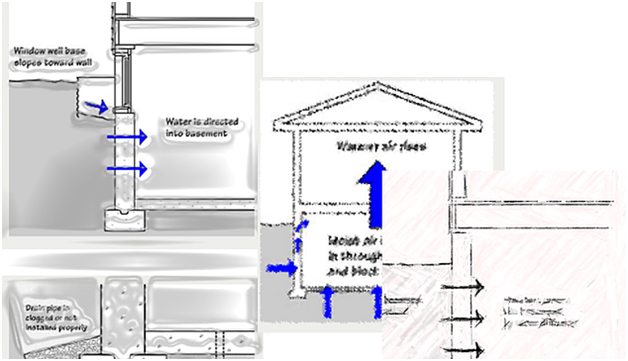When does 3 become 4 or vice versa? Waterproofing conundrums and how to simplify them
With grades from 1 – 4 for measuring dryness of the waterproofed basement and with grade 3 being described as dry and grade 4 as very dry you may be forgiven for asking what the difference is, and how dry is dry and why you might want to ask?
Apart from the use the basement is being put to – and that’s assume it’s habitable or houses precious, valuable and important things – it comes down to what’s being stored or placed in the area and if its a grade 4; probably the addition of some means of mechanical ventilation to remove humidity. If the humidity is too high, then the effect can be just as disastrous as incoming seeping damp patches or water – lets not forget; Grade one under the British Standard 8102 allows for small amounts of this; acceptable in an area like a car park.
So going back to Grade 4 and possible humidity being the cause of moisture.Then the following information should be considered.
The reasons for high humidity are numerous, but understanding the reasons and why this can occur should all be considered as part of the design by all concerned. If ignored, you could be left high but not entirely dry!
So whether you are an architect, engineer, surveyor or specifier looking at a type A, B or C system or a combination thereof; Implementation of the correct type (A, B or C), system and grades (1 to 4) is driven by; the Internal environment required. Successful planning, design and implementation means looking at;
- Ground conditions: Are they highly permeable , variable, or does the ground contain boulders, rocks? These can all be problematic for waterproofing if ignored
- Groundwater conditions including water pressure and chemical content: high groundwater pressure will require a more robust waterproofing scheme and aggressive ground can affect the suitability of the waterproofing methods
- The depth and method of construction of the basement
- Whether the substructure is to be constructed within an existing building or next to it
- What architectural finishes are required or desired? Some methods of waterproofing can affect situations such as fixing to the internal
- face of the wall
- Possible imperfections or reduced space associated with the waterproofing method
Any one of these considerations and points could render a waterproofing method inappropriate for use on the project. Never assume that because a method has worked in one situation it can automatically be applied to another. The prevailing environment is unlikely to be exactly the same just because the use the basement area is being put to is the same as a previous one.
So to get back to and summaries a Grade 4 ( and its difference to a grade 3) basement; Its function is purely driven by the requirements for the internal environment and the need to provide ‘special’ conditions for things like archiving, storage of historical papers, sensitive equipment or items where high humidity can cause irreversible damage etc. A ‘dry’ basement can be achieved by creating a Grade 3 environment. The same basic waterproofing methods and systems may be used for both Grades 3 and 4 with the difference coming from the ventilation/heating system for Grade 4.
So to give a good example; a grade one basic utility level may be perfect for an everyday underground car park, but if you are perhaps storing valuable vintage cars, then grade 4 will be what is required.
At SWS we like to think of the reassurance our thorough approach gives long after we’ve moved on to the next demanding project.

